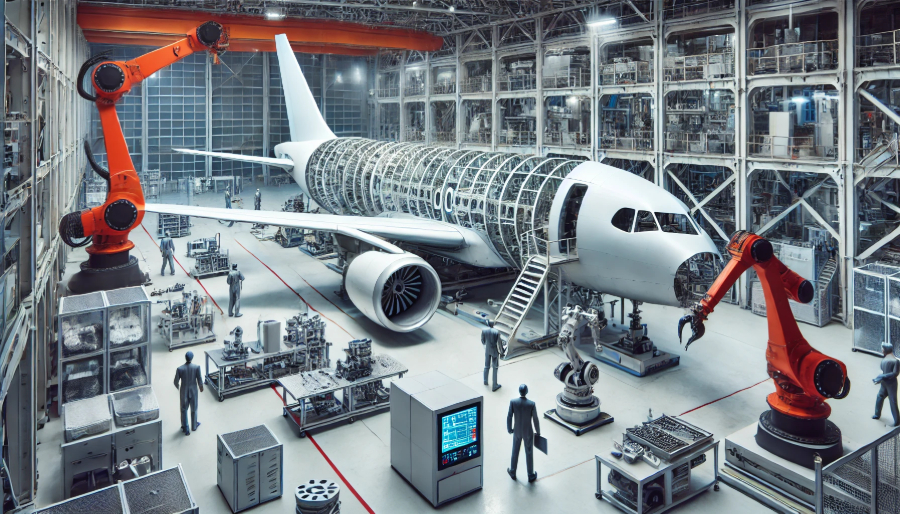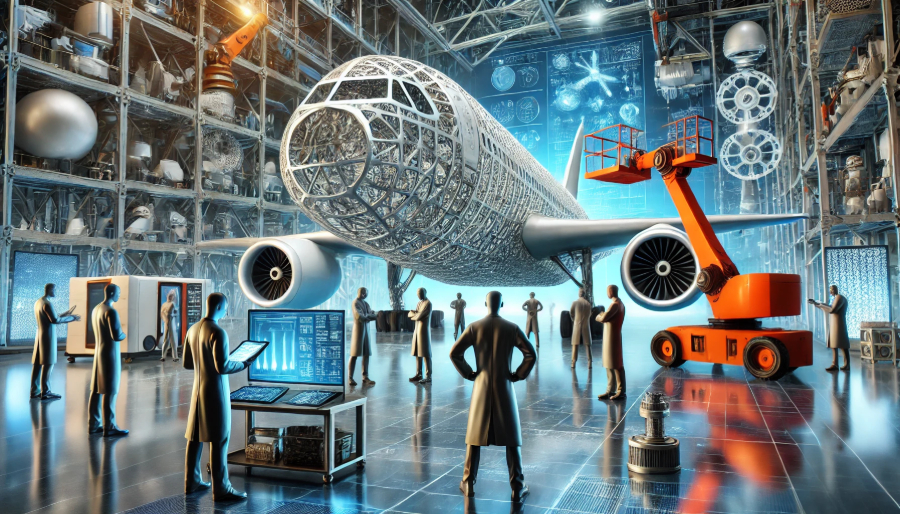The Commercial Aircraft Aerostructures Market plays a vital role in modern aircraft manufacturing. Aerostructures refer to key structural components of an aircraft, including wings, fuselage, empennage, and nacelles. As the aerospace industry moves toward lightweight materials, advanced manufacturing techniques, and fuel-efficient designs, the demand for innovative aerostructures is on the rise.
Several factors drive the growth of the Commercial Aircraft Aerostructures Market, including increased air travel, technological advancements in composite materials, and automation in manufacturing processes. The rise in fuel prices has also pushed airlines to demand more fuel-efficient aircraft, driving innovation in aerostructures.
Market Overview
The Commercial Aircraft Aerostructures Market is witnessing significant growth due to increasing aircraft production and technological innovations. Companies are focusing on reducing aircraft weight while maintaining high structural integrity. This shift has led to the adoption of advanced composite materials such as carbon fiber-reinforced polymers (CFRP) and aluminum-lithium alloys.
With the aviation industry aiming for sustainability, aerostructure manufacturers are developing lightweight components to reduce fuel consumption and carbon emissions. Additionally, advancements in automated manufacturing processes such as 3D printing, robotic assembly, and AI-driven quality control are streamlining aerostructure production.
Download Pdf Brochure: https://www.marketsandmarkets.com/pdfdownloadNew.asp?id=22021525
Key Market Drivers
1. Increasing Demand for Fuel-Efficient Aircraft
Aircraft manufacturers are focusing on lightweight materials to enhance fuel efficiency and reduce operating costs. The adoption of carbon fiber composites and advanced alloys in aerostructures helps achieve this goal.
2. Rising Aircraft Production
Leading aircraft manufacturers such as Boeing and Airbus are ramping up production to meet the growing demand for commercial jets. This has led to an increased need for high-performance aerostructures that offer durability and efficiency.
3. Advancements in Composite Materials
The use of composite materials is transforming the Commercial Aircraft Aerostructures Market. Composite materials provide high strength-to-weight ratios, corrosion resistance, and better aerodynamics, making them ideal for modern aircraft.
4. Automation and Digitalization in Manufacturing
Automation is revolutionizing aerostructure manufacturing. Robotic assembly, AI-driven quality control, and 3D printing are enhancing production efficiency, reducing errors, and minimizing waste.
5. Increasing Airline Fleets and Expansion of Low-Cost Carriers (LCCs)
The expansion of low-cost carriers (LCCs) and the replacement of aging fleets are increasing the demand for new aircraft. As airlines aim for fuel efficiency and cost reduction, advanced aerostructures are becoming a crucial investment.
Key Market Challenges
1. High Manufacturing Costs
The use of advanced composite materials and precision engineering in aerostructures increases production costs. Manufacturers must find a balance between innovation and cost-effectiveness.
2. Stringent Regulatory Standards
The aerospace industry follows strict safety regulations. Any new material or manufacturing technique must undergo rigorous testing and certification, which can delay product launches.
3. Supply Chain Disruptions
The aerospace supply chain is complex, involving multiple suppliers for raw materials, components, and finished aerostructures. Global supply chain disruptions can impact production timelines and costs.
4. Skilled Workforce Shortages
Advanced manufacturing processes require a skilled workforce proficient in robotics, AI, and composite materials. The industry is facing a shortage of such specialized talent.
Market Trends
1. Adoption of Sustainable Manufacturing Practices
Aircraft manufacturers are investing in eco-friendly materials and production techniques to align with sustainability goals. This includes recyclable composites and energy-efficient manufacturing processes.
2. Increasing Use of Additive Manufacturing (3D Printing)
3D printing is gaining traction in aerostructure manufacturing. It allows for rapid prototyping, reduced material waste, and cost-effective production of complex components.
3. Emergence of Smart Aerostructures
Smart aerostructures equipped with sensors and IoT technology can monitor stress, temperature, and fatigue in real-time, improving aircraft safety and maintenance efficiency.
4. Growth in Regional Aircraft and Urban Air Mobility (UAM)
The rise of regional jets and electric vertical takeoff and landing (eVTOL) aircraft is creating new opportunities for aerostructure manufacturers. These aircraft require lightweight, durable, and aerodynamic structures.
Key Market Segments
By Material Type:
- Composite Materials – High demand for CFRP and thermoplastic composites
- Metal Alloys – Use of aluminum-lithium and titanium alloys
- Hybrid Materials – Combination of composites and metal for strength & flexibility
By Component Type:
- Wings – Increasing use of composite wings for fuel efficiency
- Fuselage – Advancements in lightweight and corrosion-resistant materials
- Empennage – Strong demand for aerodynamic stabilizers
- Nacelle & Pylons – Essential for engine integration and performance
By Aircraft Type:
- Narrow-Body Aircraft – Dominating market due to high demand from LCCs
- Wide-Body Aircraft – Increasing use of composite fuselage structures
- Regional & Business Jets – Growing focus on lightweight aerostructures
Regional Insights
1. North America
North America leads the Commercial Aircraft Aerostructures Market, driven by major aircraft manufacturers (Boeing, Lockheed Martin) and advanced aerospace technologies.
2. Europe
Europe is a key player due to Airbus’s strong presence and a focus on sustainable aviation technologies. Germany, France, and the UK are innovation hubs for aerostructures.
3. Asia-Pacific
The fastest-growing region, fueled by increasing air traffic, airline fleet expansion, and aerospace investments from China, India, and Japan.
4. Middle East & Africa
Growing demand for aircraft in the Middle East’s aviation sector, particularly from airlines like Emirates and Qatar Airways, is boosting aerostructure investments.
5. Latin America
Emerging market with increasing investments in regional aircraft and maintenance operations.
Competitive Landscape
Key players in the Commercial Aircraft Aerostructures Market focus on innovation, strategic partnerships, and digital manufacturing technologies to stay competitive. Some of the leading companies include:
- Airbus SE
- Boeing Company
- Spirit AeroSystems
- GKN Aerospace
- Triumph Group
- Leonardo S.p.A.
- AAR Corp
These companies are investing in lightweight composite materials, advanced robotics, and automation to enhance aerostructure performance.
Ask For Sample Report: https://www.marketsandmarkets.com/requestsampleNew.asp?id=22021525
Future Outlook
The Commercial Aircraft Aerostructures Market is set for significant transformation in the coming years. With the increasing demand for fuel-efficient aircraft, the industry will witness a higher adoption of composites, automation, and digital manufacturing. The push for sustainable aviation will also lead to the development of eco-friendly aerostructures that minimize environmental impact.
Emerging trends such as urban air mobility, AI-driven aircraft design, and additive manufacturing will reshape the aerostructures market. Companies that invest in innovation, sustainability, and advanced materials will gain a competitive edge in this evolving landscape.
The Commercial Aircraft Aerostructures Market is experiencing rapid advancements in materials, automation, and manufacturing techniques. As the aviation industry shifts towards lightweight, fuel-efficient, and sustainable aircraft, aerostructure manufacturers will play a crucial role in shaping the future of commercial aviation.


